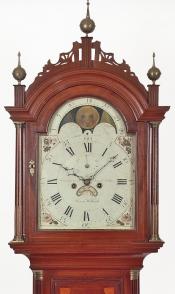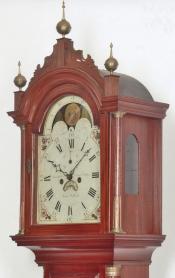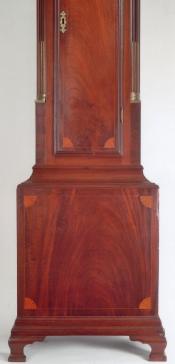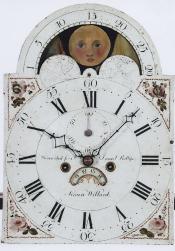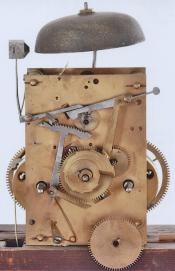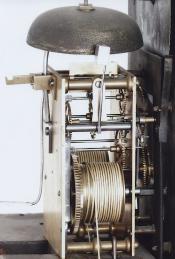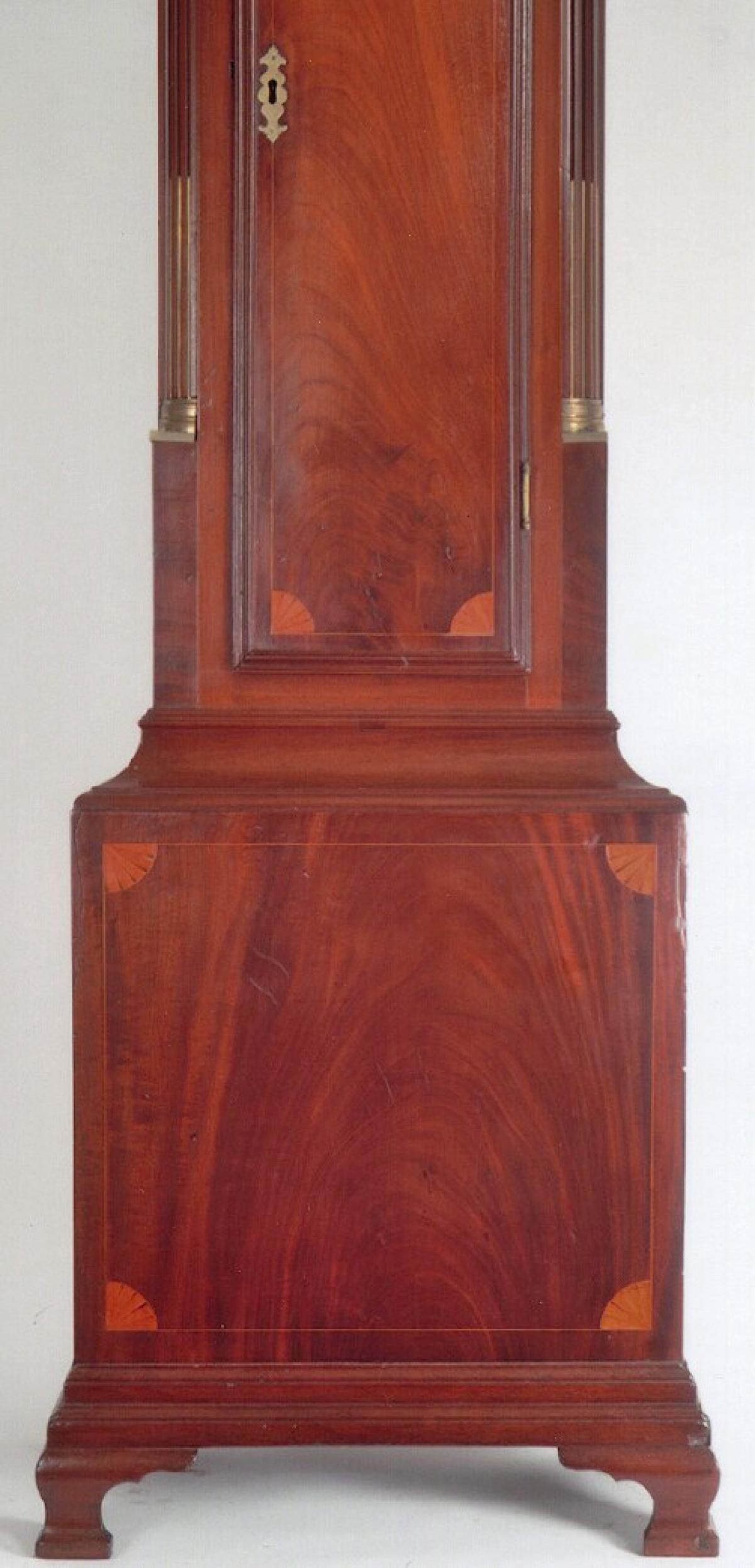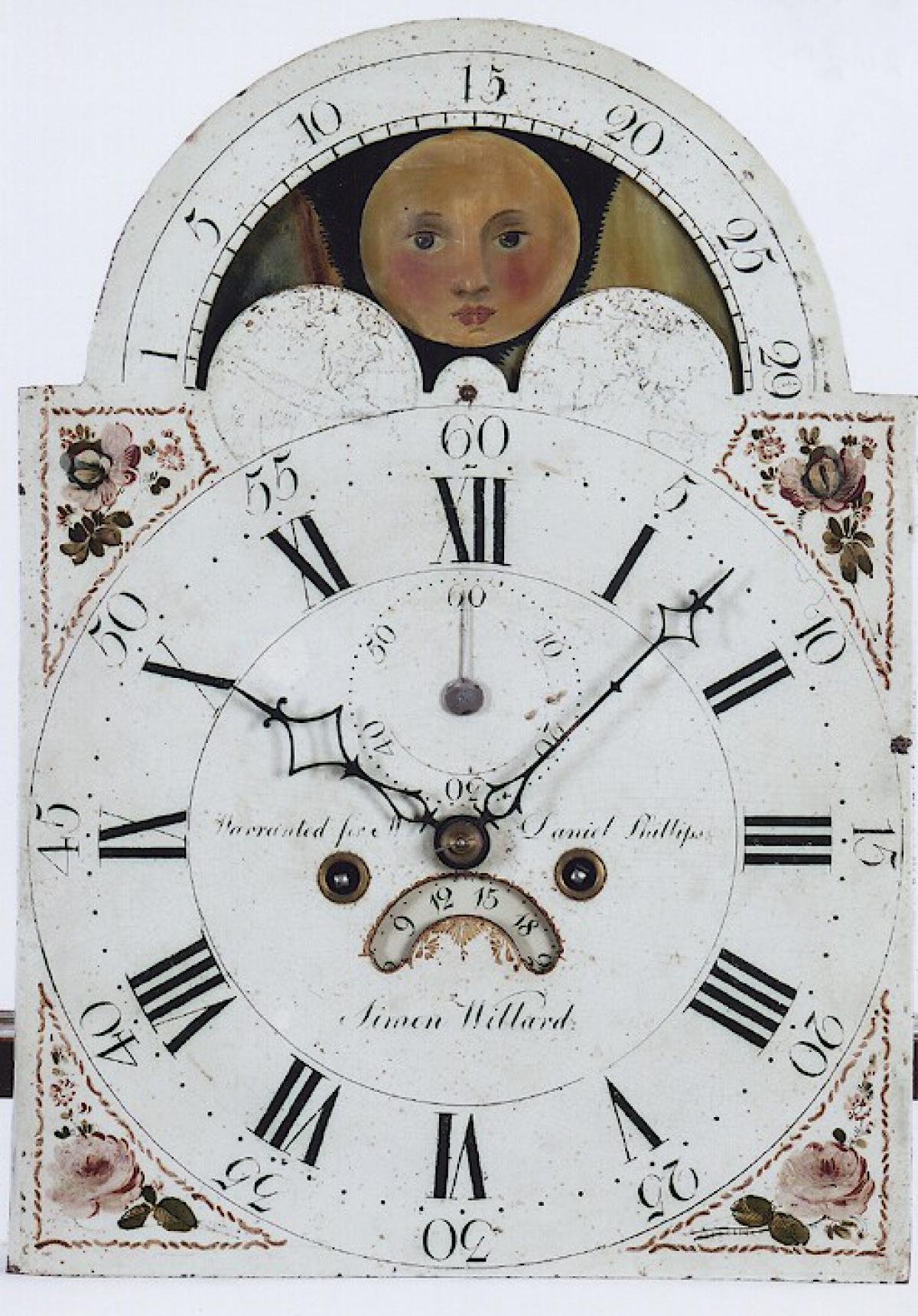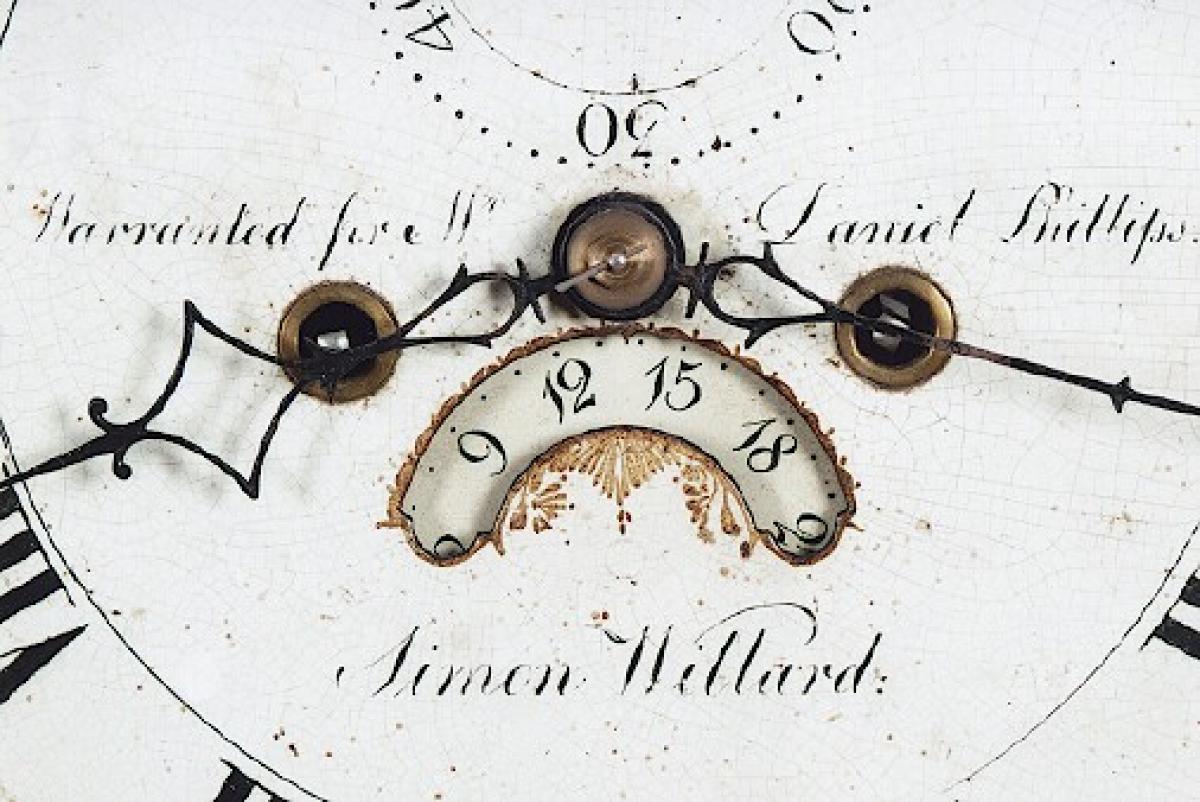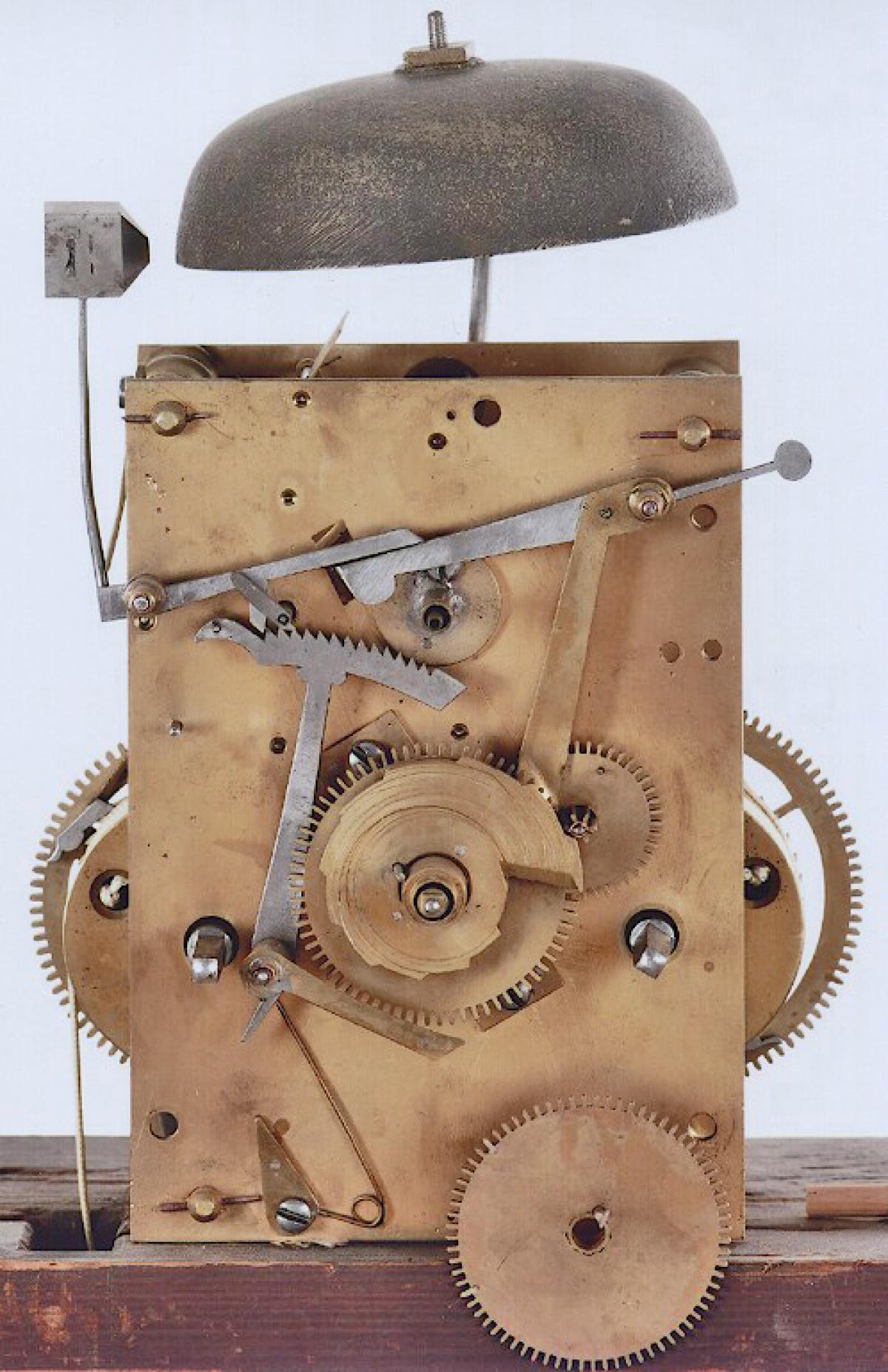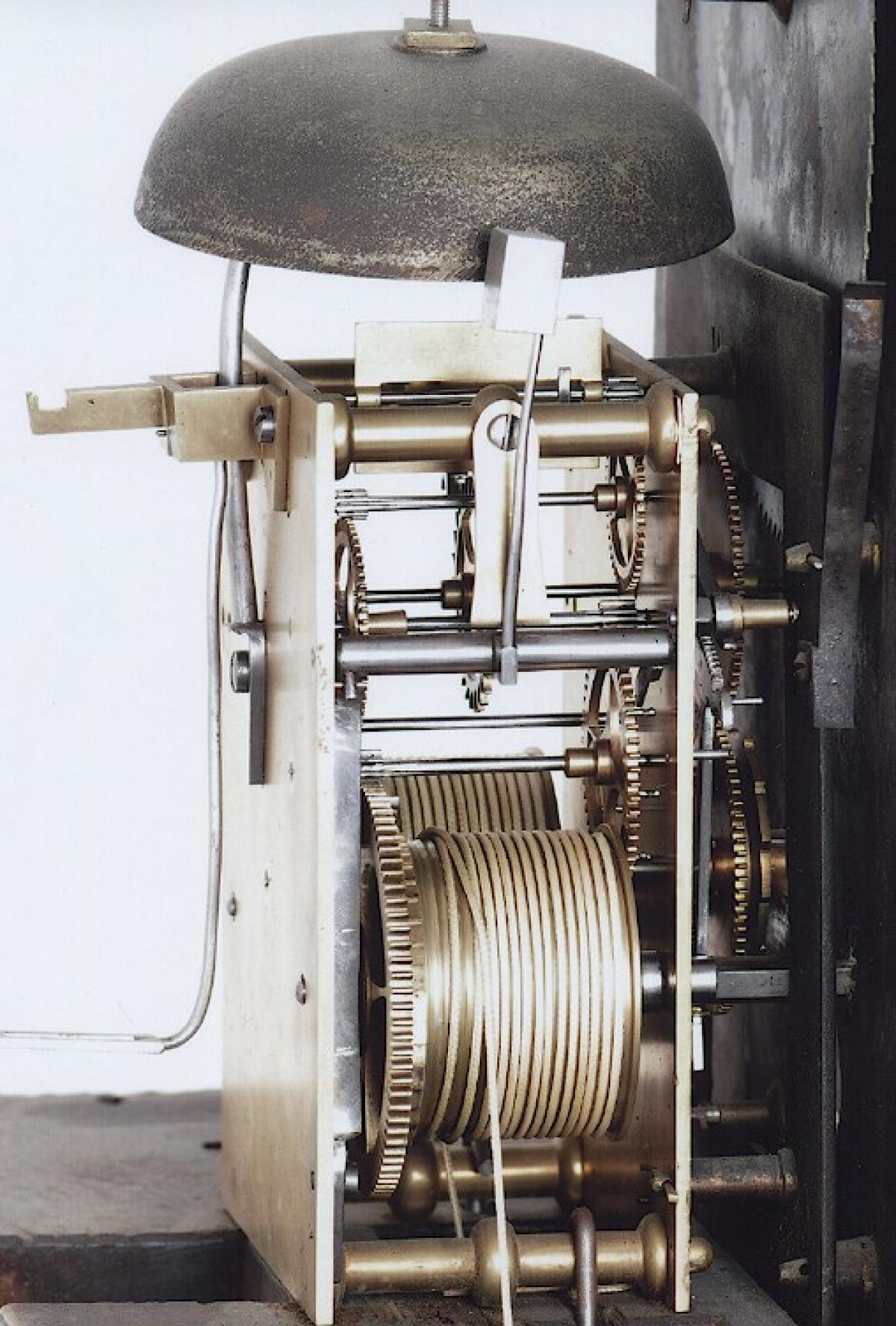Simon Willard of Roxbury, Massachusetts. Warranted for Mr. Daniel Phillips. RR-78.
This inlaid mahogany tall case clock was made by Simon Willard of Roxbury, Massachusetts.
This mahogany case is nicely proportioned. It stands approximately 8 feet 1 inch tall to the top of the center finial. This mahogany case retains an older finish. The wood selected for the waist door and the base panel exhibits a nicely figured grain pattern that features long sweeping lines. The case stands up off the floor on nicely formed ogee bracket feet. They are applied to a double-step molding. The front base panel is lined inlaid around its perimeter. The four corners are fitted with quarter fan inlays. The waist section is long and narrow. It is fitted with a rectangular-shaped door trimmed with applied molding around the outer edge. The same inlay pattern exhibited in the base panel is also found in this waist door. Brass stop-fluted quarter columns flank the waist door. These terminate in brass quarter capitals. The bonnet features a traditional Roxbury fretwork design. The three fluted chimney plinths support the three brass ball-and-spike finials. Fully turned and brass stop-fluted bonnet columns ending in cast brass capitals flank the bonnet door. This door is an arched form, and it is fitted with glass. It opens to a colorfully painted iron dial.
This dial features a moon phase or lunar calendar in the arch. Colorful floral decorations are positioned in each of the four spandrel areas. This dial is signed by the Clockmaker in script lettering. It also reads, "Warranted for Mr. Daniel Phillips." The time ring is formatted with Roman numeral hour markers. Arabic numerals are used to mark the five-minute positions. A subsidiary seconds dial and calendar dial can be viewed inside the time ring in their traditional locations.
This fine weight-driven movement is constructed in brass and is of good quality. Four-turned pillars support the two brass plates. Hardened steel shafts support the polished steel pinions and brass gearing. The winding drums are grooved. The escapement is designed as a recoil format. The movement is weight driven and designed to run for eight days on a full wind. It is a two-train or a time-and-strike design having a rack and snail striking system. As a result, it will strike each hour on the hour. This is done on a cast iron bell which is mounted above the movement.
This fine clock was made circa 1795.
Inventory number RR-78.
Simon Willard was born in Grafton, Massachusetts, on April 3, 1753. He was the seventh of twelve children born to Benjamin Willard (1716-1775) and Sarah (Brooks) Willard (1717-1775) of Grafton. While living in Grafton, Simon answered the Lexington alarm on April 19, 1775, along with his brothers. It is thought that by 1782 he moved from Grafton and took up residence in Roxbury as a Clockmaker. Simon became a Master Clockmaker as well as an inventor. He is well known for receiving patents for his roasting jack in 1782, his "Improved Timepiece" or Banjo clock in 1802, and an alarm clock patent. In addition, he trained many men to make clocks who became well-known Clockmakers once their apprenticeships were served. Some of them include the brothers Levi and Able Hutchins, Elnathan Taber, William Cummens, Ezekiel Jones and Daniel Munroe. Some of the more notable public clocks Simon built include the clock in the United States Capitol building's Statuary Hall. He also built a clock for the House of Representatives and the U. S. Senate. Simon died on August 30, 1848, at the age of 95.


